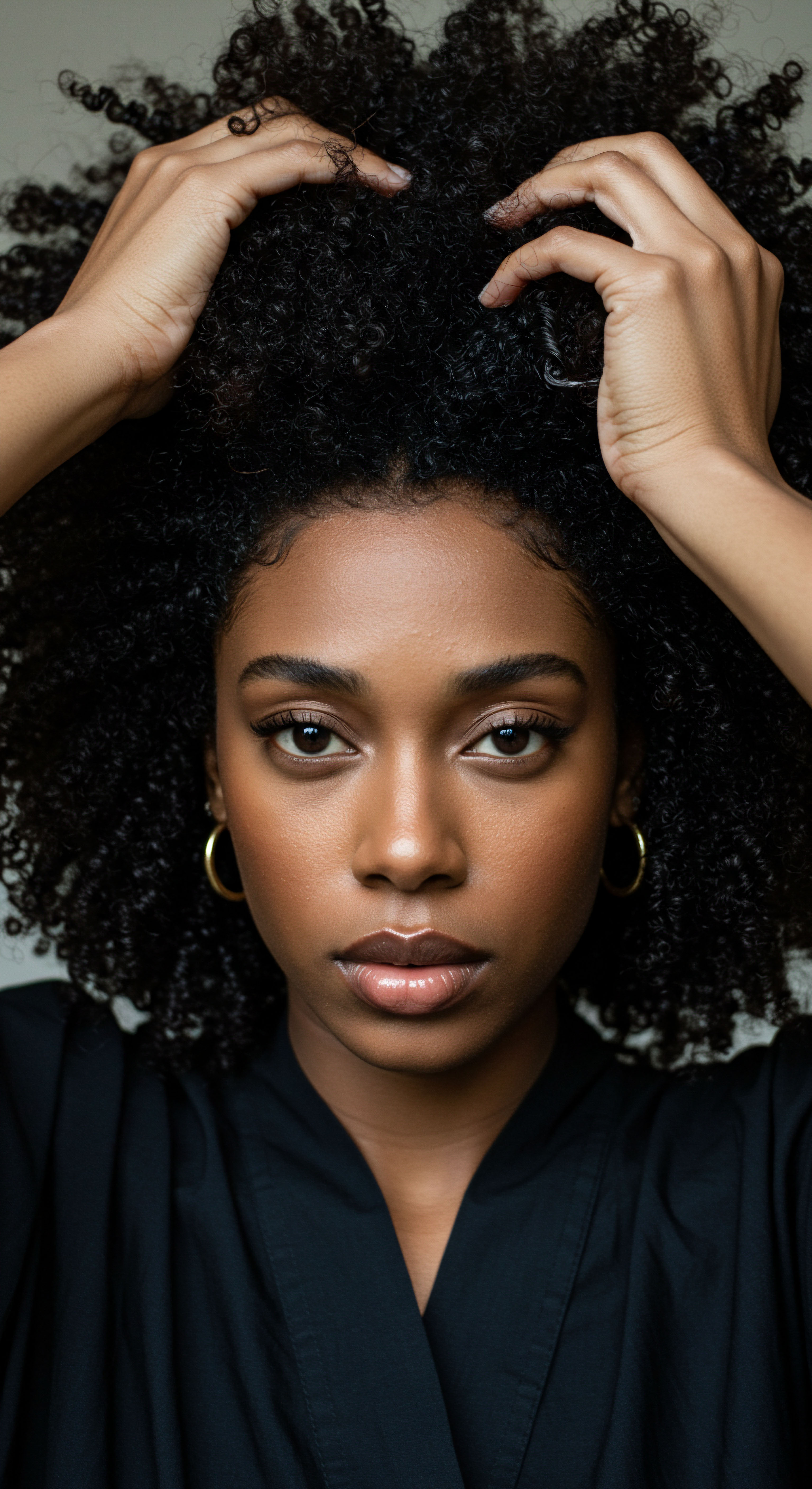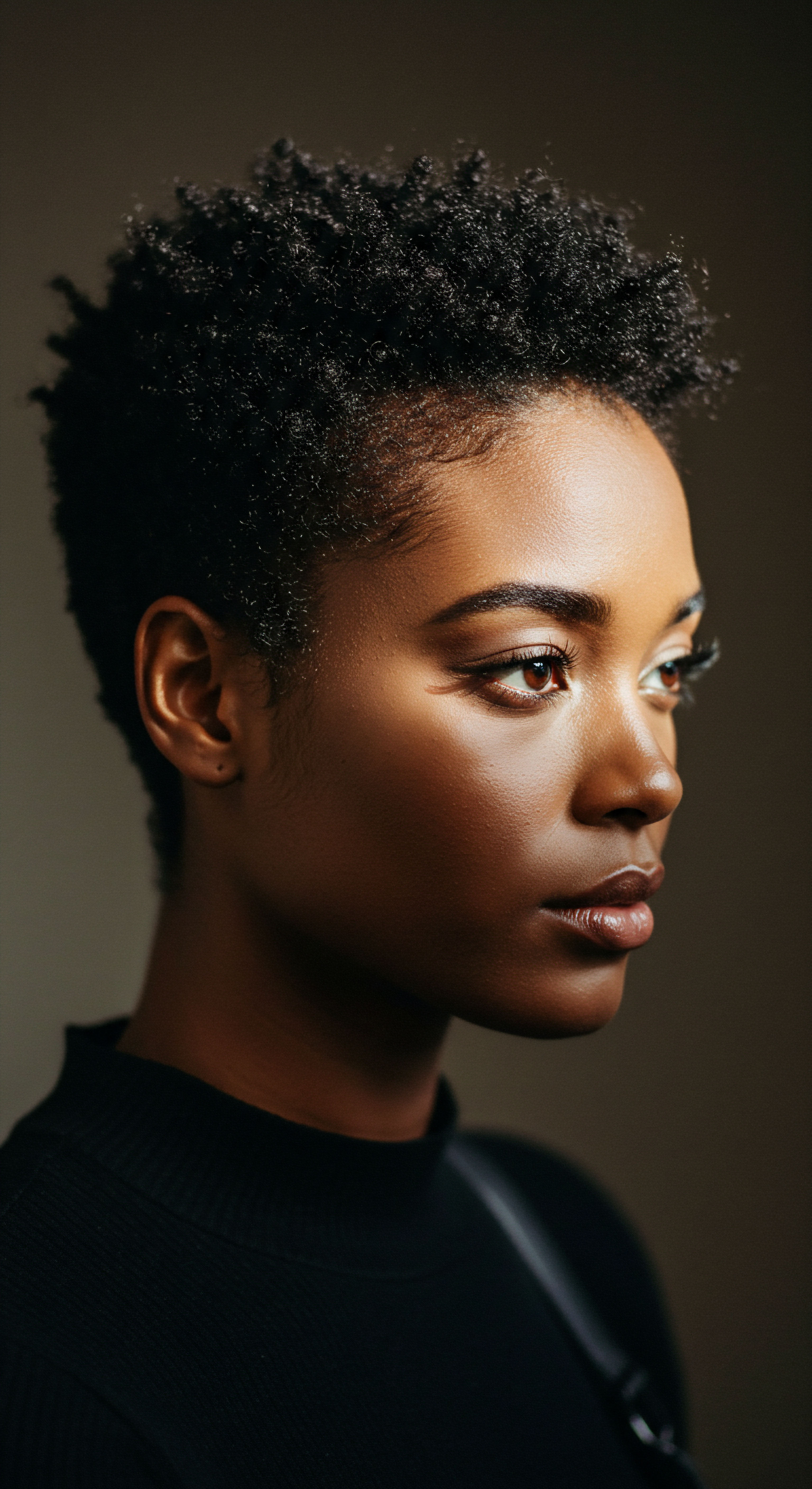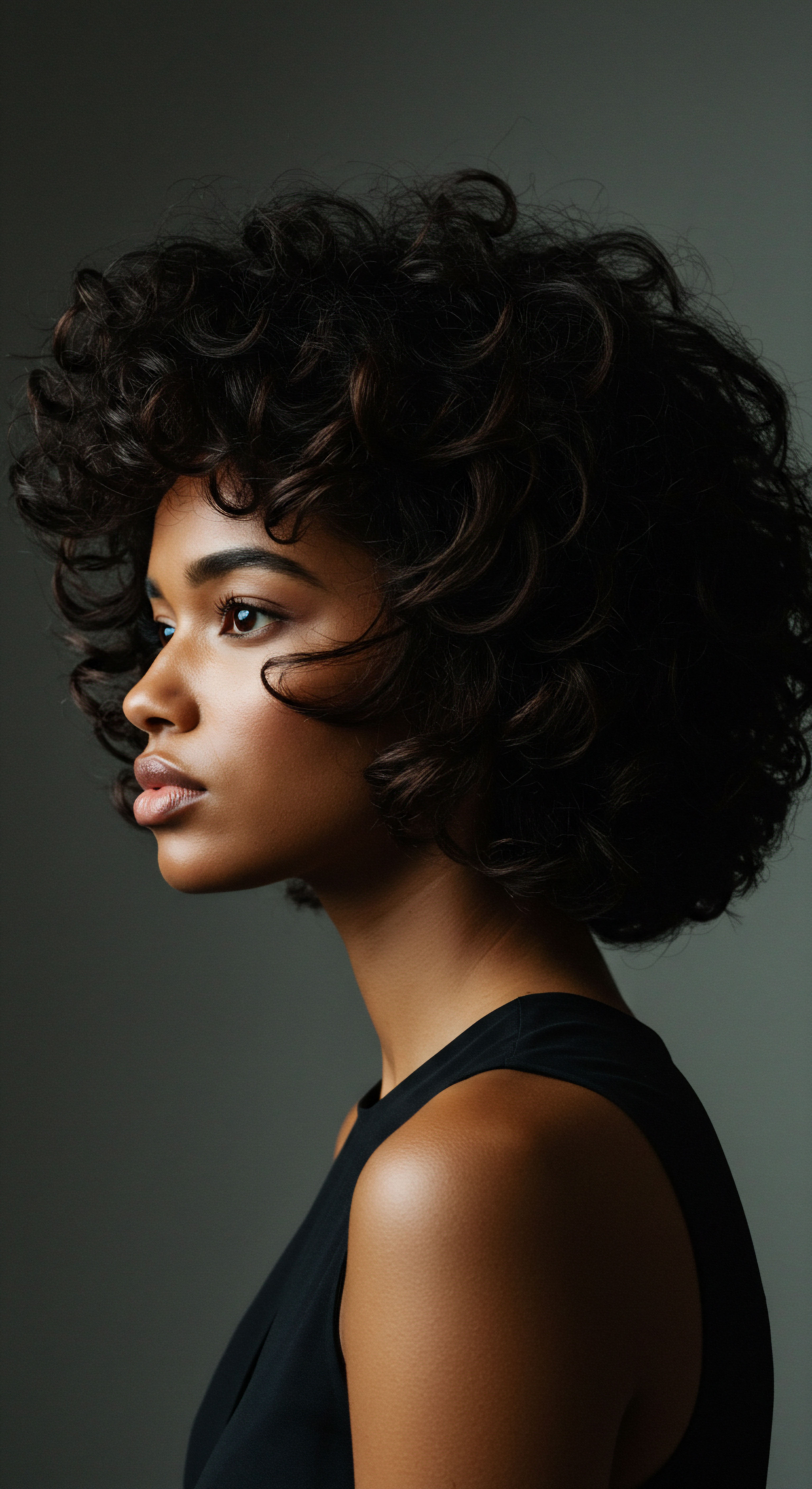
Roots
The strands that crown our heads, particularly those with a distinct curl, coil, or wave, carry stories far older than any trend or fleeting fashion. These stories whisper of lineage, of cultural memory, and of a profound connection to self. Yet, for many, the journey with textured hair has been anything but a gentle unfolding.
It has been shaped, often forcefully, by prevailing beauty standards that, for centuries, did not acknowledge its inherent splendor. To truly understand the care textured hair needs today, one must first trace the winding paths of these historical influences, observing how perceptions of beauty were imposed, how they distorted natural forms, and how they created a distance from ancestral wisdom.

Ancient Reverence for Hair
Across various pre-colonial African societies, hair held a position of deep cultural and social importance. It was not merely an adornment but a profound marker of identity, status, age, marital standing, and even spiritual connection. The way one’s hair was styled could communicate belonging to a particular tribe or community. For instance, the Yoruba people of Nigeria crafted elaborate hairstyles that symbolized community roles, while the Himba tribe in Namibia coated their dreadlocked styles with red ochre paste, signifying their connection to the earth and their ancestors.
Braiding techniques, passed down through generations, were intricate art forms, each pattern holding specific cultural meaning. In ancient Egypt, hairstyles were visible symbols of hierarchy and divinity, with elaborate wigs signifying wealth, religious devotion, and a direct link to the gods. This deep respect meant that hair care practices were often communal rituals, utilizing natural materials and techniques that supported the hair’s inherent qualities.
Hair in ancient African societies was a profound marker of identity, status, and spiritual connection, with styling practices reflecting deep cultural significance.

Colonialism’s Imprint on Hair Perception
The arrival of European colonizers and the transatlantic slave trade brought a brutal shift to these established understandings of hair. Enslaved Africans were often forced to shave their heads, a deliberate act designed to humiliate and sever ties with their cultural identity. This was a systematic attempt to erase their heritage and impose a new, oppressive reality. As Africans and their descendants settled in new lands, they faced intense pressure to conform to European beauty ideals, which championed straight, smooth hair.
This imposed standard was not merely aesthetic; it was a tool of control, linking hair texture to perceived social acceptability and even worth. Individuals with hair closer to European textures were sometimes treated better, reinforcing a damaging hierarchy.
This historical imposition led to a profound shift in how textured hair was viewed and treated. The natural characteristics of coily hair, once celebrated for its resilience and unique forms, became associated with terms like “unprofessional,” “messy,” or “unacceptable” in dominant societal narratives. This cultural violence against Afro-textured hair influenced generations, creating a cycle where conformity to Eurocentric standards was often seen as a path to social and economic advancement.

The Science of Textured Hair and Historical Misunderstandings
To truly appreciate textured hair, one must look at its biological makeup, which was historically misunderstood or outright dismissed in favor of imposed ideals. All hair is composed primarily of keratin, a protein. The distinct qualities of textured hair arise from the shape of its follicle and the distribution of keratin within the strand. Unlike straight hair, which emerges from a round follicle, coily hair grows from an oval or flattened follicle, causing it to curl as it grows.
This unique helical structure means that natural oils from the scalp do not easily travel down the entire length of the hair shaft, leading to a predisposition for dryness. Additionally, the points where the hair bends along its curl pattern can be areas of weakness, making it more prone to breakage if not handled with care.
Historical beauty standards, prioritizing straightness, ignored these inherent biological needs. Products and practices developed for straight hair were often applied to textured hair, leading to damage, dryness, and further reinforcing the idea that natural texture was “difficult” or “bad.” The scientific properties of textured hair, such as its natural porosity and elasticity, were not widely understood or addressed within the dominant beauty industry.
- Follicle Shape ❉ The shape of the hair follicle dictates the curl pattern; a flatter, more oval follicle creates tighter coils.
- Oil Distribution ❉ Natural oils from the scalp struggle to travel down the spiraled length of textured hair, contributing to dryness.
- Fragility at Bends ❉ The points where coils bend are inherently weaker, making textured hair more susceptible to breakage if not properly cared for.
This foundational disconnect between the biological reality of textured hair and the imposed beauty standards created a legacy of practices that were, at best, unhelpful, and at worst, damaging. Recognizing this historical context is the initial step toward fostering care practices that truly honor and support textured hair in its authentic state.

Ritual
Our daily hair practices are rarely just about cleanliness or appearance; they are often echoes of inherited customs, responses to societal pressures, and expressions of self. When considering textured hair, these daily rituals carry a weight of history, shaped by centuries of shifting beauty ideals. Stepping into the realm of practical hair care, we begin to see how historical standards compelled specific actions, often leading to routines that worked against the hair’s natural inclinations. Yet, within this landscape of imposed practices, we also find resilience and the quiet reclaiming of methods that truly serve textured hair.

The Allure of Straightness and Its Cost
For generations, the pursuit of straight hair became a pervasive practice for many with textured hair, driven by the societal advantages associated with Eurocentric beauty. This pursuit often involved harsh chemical treatments and extreme heat. Early chemical straighteners, or “relaxers,” became widespread, offering a seemingly permanent alteration to the hair’s natural curl pattern. These formulations, however, contained potent alkaline chemicals that fundamentally changed the hair’s protein structure, often leading to significant damage, breakage, and scalp irritation.
The hot comb, another tool of transformation, provided a temporary straightening solution. While offering immediate visual results, consistent use of high heat without proper protection can strip hair of its moisture, reduce its elasticity, and lead to irreversible heat damage. These methods, though offering conformity, came at a physical cost to the hair’s health and vitality.
| Method Chemical Relaxers |
| Description Alkaline chemicals applied to break down hair's protein bonds for straightness. |
| Common Side Effects Scalp burns, breakage, hair loss, dryness, chemical over-processing. |
| Method Hot Combing |
| Description Metal comb heated and passed through hair to temporarily straighten. |
| Common Side Effects Heat damage, reduced elasticity, dryness, potential burns to scalp. |
| Method Press and Curl |
| Description Combination of hot comb press and pin curls for waves. |
| Common Side Effects Similar to hot combing, potential for heat damage and dryness over time. |

The Rise of Protective Styles and Their Cultural Roots
Despite the pressures to conform, protective styles remained a consistent, albeit sometimes hidden, practice within textured hair communities. These styles, which tuck away the hair to minimize manipulation and exposure to environmental elements, have roots stretching back thousands of years in African cultures. Braids, twists, and cornrows were not simply aesthetic choices; they served practical purposes like protecting hair from the elements and were used to convey social status, tribal affiliation, and even secret messages during times of oppression.
Protective styles, deeply rooted in African traditions, offer a method of safeguarding hair from environmental stressors and manipulation.
The resilience of these styles, often passed down through generations, highlights a continuous connection to heritage even when dominant society rejected natural textures. Today, these practices are experiencing a powerful resurgence, celebrated for their beauty, versatility, and their ability to promote hair health by reducing breakage and encouraging length retention. Modern iterations of these traditional techniques are now embraced as a deliberate choice to honor natural texture and protect it from damage.

Understanding Hair Porosity and Elasticity for Better Care
Moving beyond historical impositions requires a deeper understanding of hair’s intrinsic properties. Two key characteristics for textured hair care are Porosity and Elasticity. Porosity refers to the hair’s ability to absorb and retain moisture, determined by the state of its outermost layer, the cuticle.
- Low Porosity Hair ❉ This hair type has tightly closed cuticles, making it difficult for moisture to enter but also good at retaining it once absorbed. It can be prone to product buildup.
- High Porosity Hair ❉ This hair type has more open or raised cuticles, absorbing moisture quickly but losing it just as fast. It often feels rough and is prone to frizz and dryness.
- Medium Porosity Hair ❉ This hair type has cuticles that are neither too open nor too closed, allowing for balanced moisture absorption and retention.
Elasticity, on the other hand, measures the hair’s ability to stretch and return to its original shape without breaking. Hair with good elasticity is resilient and less prone to breakage, especially during manipulation. When hair is dehydrated, it loses its elasticity and becomes brittle. Historical practices that relied on harsh chemicals or excessive heat often compromised both porosity and elasticity, leaving hair brittle and unable to hold moisture effectively.
Modern care rituals emphasize understanding these properties to select products and techniques that truly nourish and support the hair’s unique structure, rather than fighting against it. This shift represents a move toward care that is attuned to the hair’s biological needs, informed by science, and inspired by a reclaimed appreciation for natural forms.

Relay
The echoes of historical beauty standards resonate far beyond superficial appearance, deeply influencing self-perception, societal interaction, and even physical well-being for individuals with textured hair. This deeper exploration calls us to examine the profound interplay of social pressures, psychological impacts, and the very real health consequences that stem from centuries of imposed ideals. We seek to understand not just what happened, but the lingering effects, and how contemporary understanding and conscious choices are paving a path toward genuine hair wellness and acceptance.

The Psychological Weight of Conformity
The persistent message that straight hair equates to beauty or professionalism has levied a significant psychological burden on many with textured hair. From childhood, individuals may internalize negative messages about their natural hair, leading to feelings of inadequacy or shame. This pressure can manifest as anxiety and hypervigilance about how one’s hair is perceived in academic, professional, or social settings.
The drive to conform to Eurocentric standards often becomes intertwined with aspirations for social and economic success, creating a complex internal conflict. The choices made regarding hair are therefore not simply cosmetic; they are often a response to a deeply ingrained system of societal judgment.
The historical push for conformity has created a lasting psychological impact, where hair choices often reflect a complex negotiation with societal expectations.
This phenomenon is evident in studies that examine the experiences of Black women. Research indicates that many Black women feel compelled to chemically straighten their hair to avoid discrimination, a practice that can be both physically and psychologically taxing. This pressure is not merely anecdotal; it is documented in studies on workplace and school discrimination, where natural hairstyles are sometimes deemed “unprofessional” or “unsuitable.”

Unseen Health Consequences of Historical Hair Practices
Beyond the emotional toll, the historical pursuit of straight hair has had tangible, severe health implications. The widespread use of chemical relaxers, designed to permanently alter hair texture, has introduced a range of harmful chemicals into the lives of millions. These products, often containing lye (sodium hydroxide) or other strong alkaline agents, can cause scalp burns, irritation, and damage to the hair shaft itself. However, the repercussions extend beyond immediate cosmetic damage.
A significant and concerning data point arises from recent scientific investigation into the long-term health effects of these products. A 2022 study published in the Journal of the National Cancer Institute found a link between frequent use of chemical hair straighteners and an increased risk of uterine cancer. This extensive study, part of the Sister Study which observed over 33,000 women for nearly 11 years, identified 378 cases of uterine cancer, concluding that women who reported using hair straighteners frequently (more than four times in the past year) were twice as likely to develop uterine cancer compared to those who did not use them.
This finding underscores a profound and often overlooked consequence of beauty standards that pressured individuals to chemically alter their natural hair. The choice to straighten hair, driven by societal norms, inadvertently exposed individuals to substances with potentially severe health risks.
| Health Concern Scalp Irritation & Burns |
| Mechanism of Harm Direct contact of strong alkaline chemicals with skin. |
| Research Connection Commonly reported adverse reaction to relaxers. |
| Health Concern Hair Breakage & Loss |
| Mechanism of Harm Weakening of hair protein structure, leading to fragility. |
| Research Connection Observed consequence of chemical over-processing. |
| Health Concern Uterine Cancer Risk |
| Mechanism of Harm Exposure to endocrine-disrupting chemicals present in some straighteners. |
| Research Connection Linked in a 2022 Journal of the National Cancer Institute study. |

Reclaiming Identity and Redefining Care
The growing awareness of these historical burdens and their continuing impact has fueled a powerful movement towards celebrating natural textured hair. This movement is not simply about aesthetics; it is a profound act of cultural reclamation and self-acceptance. It involves a conscious rejection of imposed beauty standards and a deliberate return to practices that respect and nourish textured hair’s unique characteristics.
This contemporary shift involves several critical aspects:
- Education ❉ A deeper understanding of hair anatomy, porosity, and elasticity empowers individuals to make informed care choices, moving away from generic products and damaging techniques.
- Product Innovation ❉ The market has responded with a surge of products specifically formulated for textured hair, often free from harsh chemicals and rich in hydrating and defining ingredients.
- Community Support ❉ Online platforms and social groups provide spaces for shared experiences, learning, and mutual encouragement, reinforcing positive self-image and collective pride.
The relay of historical beauty standards has left an undeniable mark, shaping perceptions, practices, and even health outcomes. Yet, the current generation is actively working to shift this narrative, choosing self-acceptance and informed care over conformity. This ongoing transformation speaks to the resilience of identity and the enduring pursuit of genuine well-being for textured hair.

Reflection
The story of textured hair care, viewed through the lens of historical beauty standards, is a profound testament to the human spirit’s capacity for adaptation, resilience, and reclamation. It begins with the gentle whispers of ancient reverence, where hair was a living symbol of connection and identity, only to be met with the harsh winds of imposed ideals that sought to diminish its natural form. The journey through these historical impositions reveals the silent battles fought within individuals and communities, where the pursuit of acceptance often came at a significant cost, both psychological and physical. Yet, this narrative does not end in struggle.
It progresses into a vibrant present, where knowledge, community, and self-acceptance are rewriting the script. Each curl, coil, and wave, once a point of contention, now stands as a symbol of defiance, beauty, and a deeply personal connection to a rich, unbroken heritage. The future of textured hair care lies not in forgetting the past, but in understanding its lessons, celebrating every unique strand, and fostering a world where all hair is simply beautiful, without qualification or imposed ideal.

References
- Chang, Che-Jung, O’Brien, Katie M. Jackson, Chandra L. James-Todd, Tamarra, Bertrand, Kimberly, Rosenberg, Lynn, Wise, Lauren A. Stacy, Shaina, Motsinger-Reif, Alison M. Niehoff, Nicole, White, Alexandra J. “Use of Straighteners and Other Hair Products and Incident Uterine Cancer.” Journal of the National Cancer Institute, 2022.
- Oforiwa, Alice. “The History and Culture of African Natural Hair ❉ From Ancient Times to Modern Trends.” AMAKA Studio, 2023.
- BLAM UK CIC. “The History of Black Hair.” 2022.
- Caffrey, Cait. “Afro-textured hair.” EBSCO Research Starters, 2023.
- Oyekan, Sola. “African Hairstyles ❉ Cultural Significance and Legacy.” Afriklens, 2024.
- Maharaj, Claudette. “Beyond the roots ❉ exploring the link between black hair and mental health.” British Psychological Society, 2025.
- The Kurl Kitchen. “The Cultural Significance Of Natural Hair In Different Communities.” 2024.
- Leidenanthropologyblog. “‘Hairstyle Politics’ ❉ Decolonizing Beauty Standards.” 2017.
- Consumer Notice. “Hair Discrimination in the Workplace ❉ How it Affects Mental Health.” 2023.
- Economic Policy Institute. “The CROWN Act ❉ A jewel for combating racial discrimination in the workplace and classroom.” 2023.